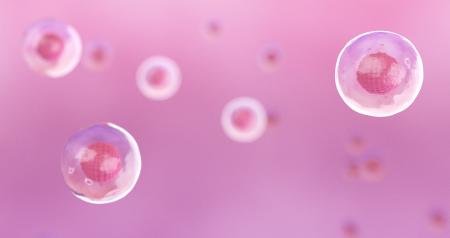Treating Heart disease with stem cells
Patients with reduced cardiac health are facing 3 main health concerns:
- Reduced cardiac function due to damage, enlargement, or stiffness of the heart muscle, leading to difficulty in pumping blood into the circulation.
- Circulatory congestion in the brain, leading to dizziness and confusion, in the lungs, leading to shortness of breath, peripheral circulation, leading to swelling in the abdomen, legs, and ankles, and excess fluid load on the kidneys.
- Increased inflammation & heavy metal load in the body, leading to coronary artery disease, arrhythmia, and increased risk of a heart attack.
Regenerative stem cell therapy for Heart disease
An efficient way to help restore the quality of life of our cardiac patients is to address these challenges in parallel, repairing the heart organ, quenching inflammation, chelating heavy metals, and improving circulation.

Heart disease Treatment Plan
Our treatment plans generally last between 2 and 5 weeks, depending on your overall health, your condition, and the severity of your Heart disease symptoms. Anyone can sign up for stem cell treatment for Heart disease. Each stem cell treatment candidate will receive a tailored plan to help achieve the highest success rate for maximum therapy efficiency. Typically, stem cell therapy for Heart disease will resemble a program such as the one below, and will last for 4 weeks.

Stem cells
20 stem cell IVs

Plurisomes
4 Plurisomes IVs

Peptides & Nutraceuticals
20 IVs

Chelation
20 IVs

Ozone
4 sessions

Physiotherapy & Massage
4 sessions
Treatments
- Anti-Aging
- Alzheimer's disease
- Arthritis
- Back Pain
- Brain Injury
- Cerebral Palsy
- COPD
- Diabetes
- Fibromyalgia
- Heart disease
- Knees
- Guillain Barré Syndrome
- Lyme disease
- Multiple Sclerosis
- Neck Pain
- Nerve Damage
- Neuropathy
- Opioid Addiction
- Pain Management
- Parkinson's disease
- Post-Viral Syndrome
- Pulminary Fibrosis
- Rheumatoid Arthritis
- Scleroderma
- Shoulder Pain
- Facelift
- Stroke
- Treated by Stem Cells

Benefits of stem cell therapy for Heart disease patients
The role of stem cells in cardiac health is to repair the damaged heart and other affected organs, improve circulation and prevent future heart attack risk.
-
Increase in physical stamina
The first benefit from stem cell treatment is an increase in overall energy levels and physical stamina. Pluripotent stem cells contain growth factors, angiogenic and transcription factors that repair the cardiac muscle and activate cardiac progenitor stem cells. Patients experience renewed vitality, the ability to walk longer distances, climb stairs and resume mild exercise.
-
Decrease in circulatory congestion
As the pumping capacity of the heart begins to restore, and as the inflammation and heavy metals are cleared, the body’s circulation gets going once again. Patients report gradual improvements in brain function, breathing, and the fluid retention and swelling begin to wane.
-
Improvement in quality of life
We’ve had patients that would have had to quit their jobs or sell their farms if their ejection fraction did not improve. The stakes are high with cardiac health. Once the heart muscle is actively repairing, circulation moving, and perfusing all the vital organs, the individual has much more strength and can once again plan an active future. Stem cells give them their life back.
Frequently Asked Questions
-
How does stem cell therapy support repair of the heart in heart disease?
Stem cell therapy using pluripotent stem cells and Plurisomes™ helps repair the heart by stimulating natural healing and regeneration. Once administered, these powerful cells release healing signals (exosomes) that encourage the growth of new heart tissue and blood vessels, improving circulation and heart function.
The therapy promotes regeneration of heart muscle cells, supports recovery after heart attacks, and helps strengthen weak or damaged areas of the heart. It can also improve conditions like low ejection fraction or arrhythmias (irregular heartbeat) through enhanced cell repair and renewal.
Most patients begin noticing gradual improvements over three to six months, as the therapy continues working long after the initial treatments to restore heart strength and vitality.
-
What types of heart conditions may benefit from stem cell therapy?
Stem cell therapy using pluripotent stem cells and Plurisomes™ may benefit several heart-related conditions by repairing damaged tissue, improving circulation, and supporting overall heart function.
It has shown promise for conditions such as low ejection fraction (weak heart pumping), atrial fibrillation (irregular heartbeat), and general cardiovascular disease. After a heart attack, these cells can help regenerate heart muscle and promote the growth of new blood vessels, aiding recovery.
The therapy may also support improvement in artery health, mild heart enlargement, and post-COVID heart inflammation.
By signaling deep tissue repair and regeneration, stem cells strengthen the heart’s natural healing ability, helping restore healthier rhythm, function, and vitality over several months.
-
Is there a limit on how long someone has had heart disease before they can receive pluripotent stem cell therapy?
There is no time limit on how long a person has had heart disease before starting stem cell therapy. The treatment is designed to help repair heart damage, even if it occurred many years ago.
Pluripotent stem cells can reactivate the body’s natural repair process, encouraging new heart cell growth and improving circulation, regardless of when the damage first happened. After a heart attack, each injection of stem cells can trigger a new week-long healing phase, even after the heart’s natural repair period has ended.
Treatment duration depends more on a person’s overall health and disease severity than on how long they’ve had heart disease. Standard programs typically last about two weeks.
-
Can pluripotent stem cell therapy reduce reliance on medications, bypass surgery, or stents?
Pluripotent stem cell therapy is designed to address the root causes of disease—such as inflammation, tissue damage, and poor circulation—helping many patients reduce or even eliminate the need for certain medications and procedures.
By promoting whole-body repair and immune balance, pluripotent stem cell therapy can lower dependence on painkillers, anti-inflammatory drugs, and immunosuppressants. Patients often report improved energy and reduced medication use as healing progresses.
For heart conditions, pluripotent stem cell therapy helps regenerate heart tissue and promote new blood vessel growth, improving function and circulation. While it can strengthen the heart and slow disease progression, it cannot clear arterial blockages. For that, treatments like EDTA chelation are often combined for better artery health and prevention support.



